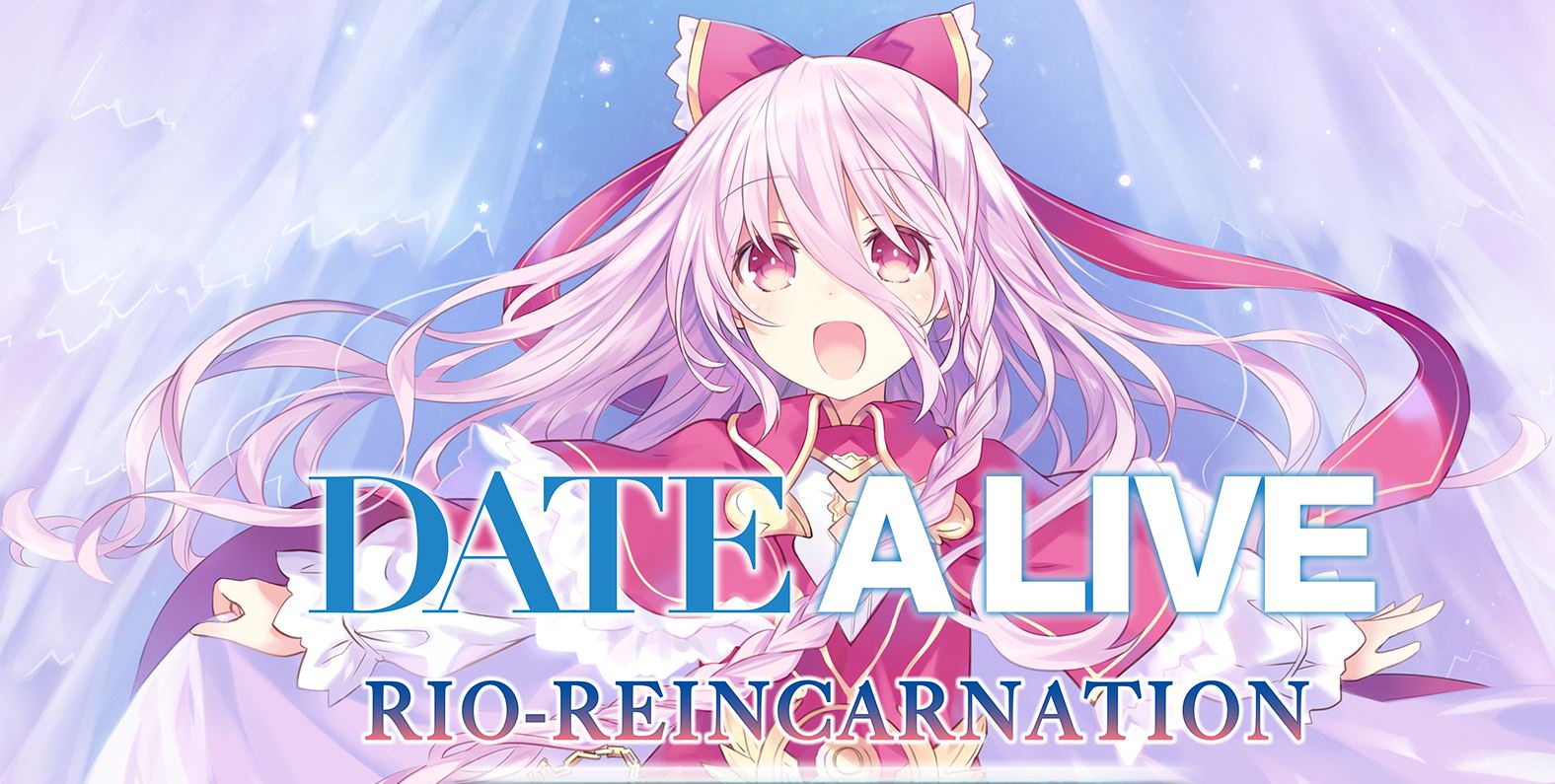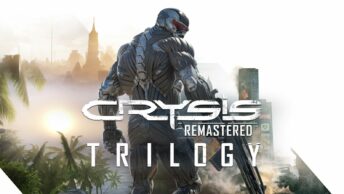DATE A LIVE: Rio Reincarnation isn’t just a simple visual novel; it’s much more than that! It’s three visual novels in one! What it lacks in interactive gameplay it more than makes up in attention grabbing plot!
Type: Single-player
Genre: Visual Novel, Simulation
Developer: Idea Factory,
Compile Heart, Sting
Publisher: Idea Factory
Franchise: Date A Live
Release Date: 23 Jul, 2019


Reviewer’s Note
Let me preface this review with a statement. I do not exactly like reviewing Visual Novels since they are quite difficult to do without spoiling the story by accidentally revealing a bit too much detail. As you have likely gleaned from my other reviews, I tend to like Idea Factory’s Neptunia series and their games in general. The gameplay in those is very much the same between games except for the spin-offs which can be anything (including a bullet hell shooter). They are not really about the gameplay so much as they are in following along with Neptune and her Friends latest escapades. In the earlier titles, particularly in combat, character movement and gameplay in general were all pretty basic in comparison to other better known shape-related named JRPG maker’s current offerings. Idea Factory’s games were always more about the story (and fan service) than they were about in-depth or complex gameplay. They are perfect for someone like me who hates button mashing quick time events, frequent deaths, or those who have all the coordination of a puppeteer with tangled strings. The thing is, I can play those and write my thoughts easily. This is where my problem with Visual Novels comes in. There isn’t any gameplay to really talk about. It’s text on the screen with pictures. There are some choices to make but for the most part there isn’t even basic gameplay elements to talk about in any detail. I could talk about the story, but that violates my “No Spoilers” rule that I have set for myself from the beginning of time. The reason why I do that rule is because back in the day I was reading a review about a game I was very interested in and the reviewer, without any warning, talked about the shocking death of a main character in it. When that moment came while I was playing the game later, the shock value was not there for me and it was a definite let down. I don’t ever want one of my readers to feel that way about one of my reviews. Basically, that leads me to not really being able to talk openly about the game I need to review in great detail because it is basically nothing but plot to talk about. Thus, the reason why I do not like reviewing Visual Novels is quite clear. I don’t want to spoil things for others so it takes much longer to carefully write without giving the story away.
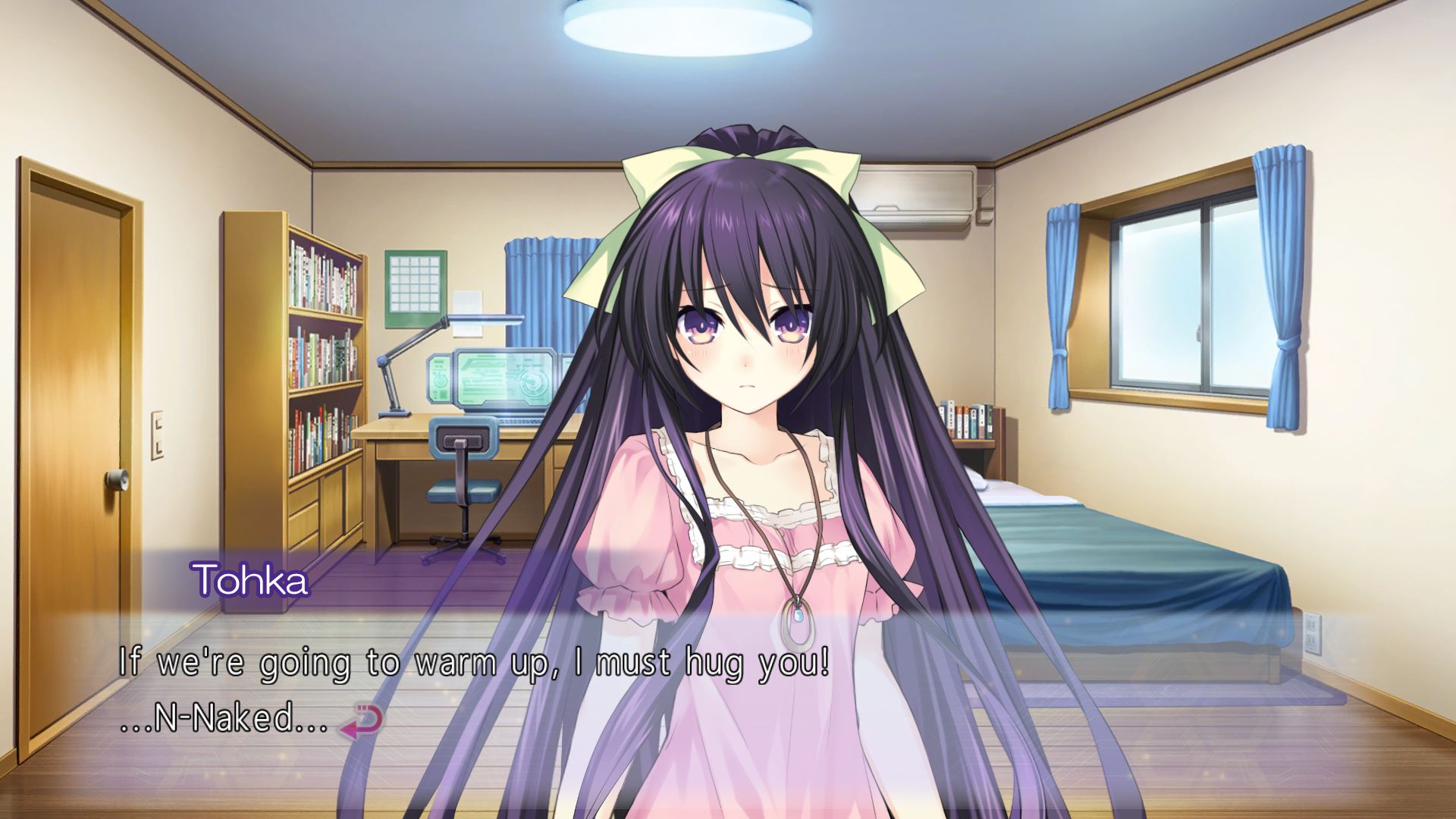
I’m going to review this game as if I am completely oblivious to the source material and that I have never read any of the light novel, manga nor watched the anime. This review isn’t going to be on how closely it followed a story arc, or how it was modified here and there, no it isn’t going to be that kind of review. Others may write that kind of review for you, but I’d prefer to write this for Visual Novel fans or just gamers in general who are not sure if they want to try out DATE A LIVE: Rio Reincarnation.
Review
First off, as mentioned in the tagline at the top, DATE A LIVE: Rio Reincarnation isn’t just one game. It’s actually three games. I played all three games as quickly as I could games so I would be able to talk about them all rather than just focusing on the titular Rio Reincarnation. Basically, without spoiling anything, the three games are linked together to form one long character development cycle. The events in the first and second game are often referenced in the third game, so playing them in order is recommended if you want to avoid spoilers. If you really don’t want to play the first two games or perhaps you already played them a while ago and need a refresher, there is a Digest available that summarizes everything that has happened to date before the third game. With that said, ignoring the source material for the game, the first game doesn’t feel like the first game in the story arc covered in the trilogy collection. While I was playing the first game, it felt like I was jumping into the middle of the story rather than being the starting point. Before any of you out there in the comments point out that in the source material there were stories before when the game is set, I will remind you I don’t care about that right now, this is a review of what the game has to offer, not the franchise! Now the game did a decent job explaining what had transpired before you, the player, got to start watching the events unfold, it still felt like the second game in the series. When watching the aforementioned Digest, it did a really good job patching up the missing prologue elements to make the backstory even more understandable, but it also thoroughly spoiled the first and second game if you watch too much of it. It is meant as a reminder of the events after all!
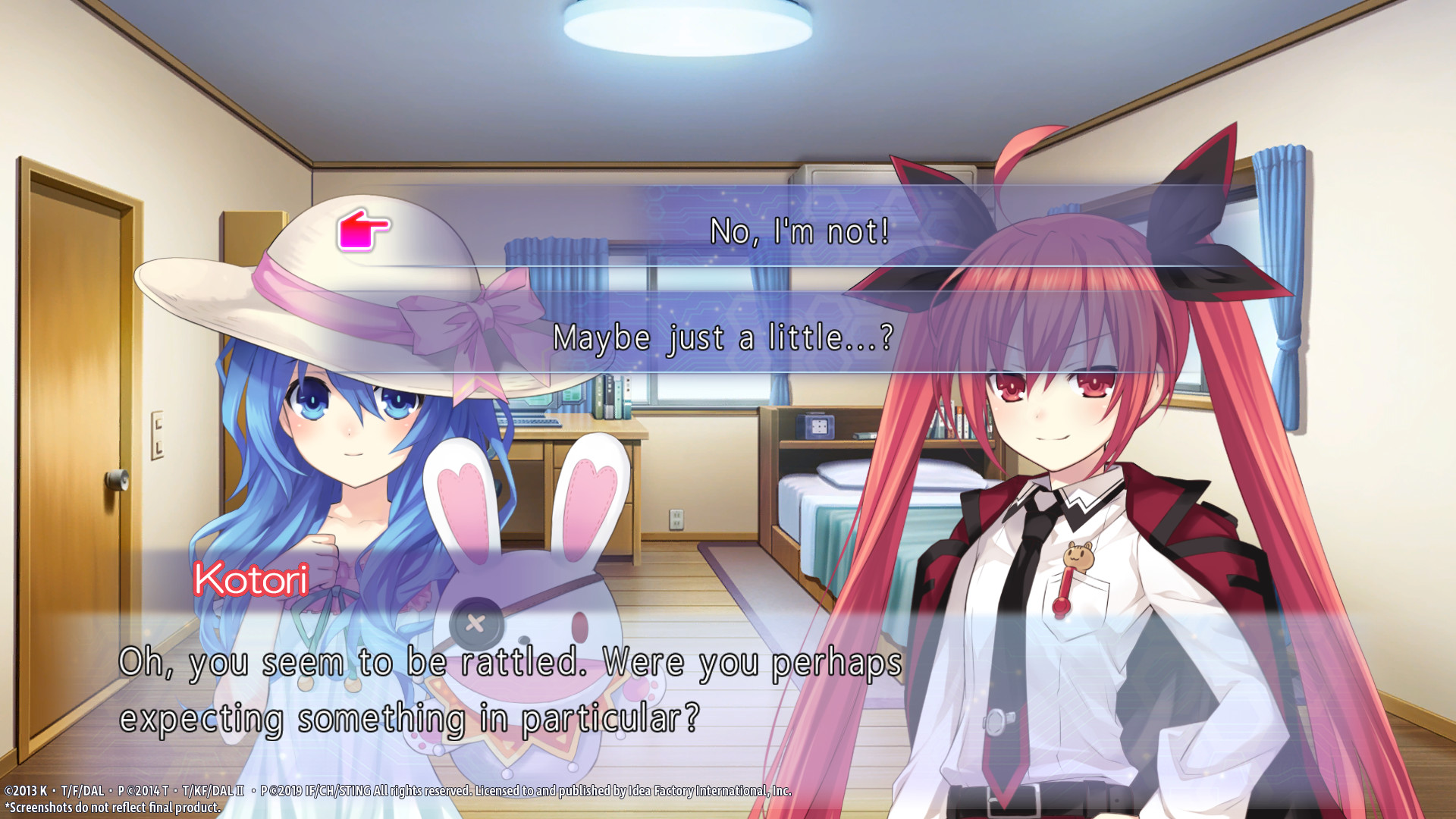
I’m not going to go into story point details of three games as that would introduce spoilers, but I can share some common elements and harmless facts. First off, you play as a male character with an overabundance of lady friends and the token male friend. On first glance, your character is nothing special, probably not even overly handsome, but he has an innate ability to curb the female Spirits and prevent them from going on destructive rampages simply by sealing away their powers. He doesn’t seal their powers away by violence or combat or any other form of actual gameplay, he simply spends time with the Spirit and that causes his power to seal hers. Before you think that sounds evil, she really doesn’t seem to mind, in fact the female Spirits tend to fight over who will get to spend time with the player character. None of them like it when they get unstable which is bound to occur if their power returns to them. All three games follow the same basic idea that you will follow along the story as an observer and occasionally get to make a choice. Some of these choices seem like they may have an impact, but some of them feel like they are just alternate dialogue before the story continues along as normal. Outside of the infrequent normal Visual Novel choices, you also get your decision on how you want to finish off a day via, for a lack of a better term, the world map. You are given up to two screens with multiple secondary and primary characters you can interact with. Talking to a secondary character gives you a nice little conversation but doesn’t advance the day. You are limited to how many secondary characters you can talk to per day though. Talking to a primary character will use up a unit of time. If it is the final unit of time for the day, the day will advance and the story will continue. You are not able to talk to every secondary nor primary character on any given day. That’s the core gameplay of the trilogy.
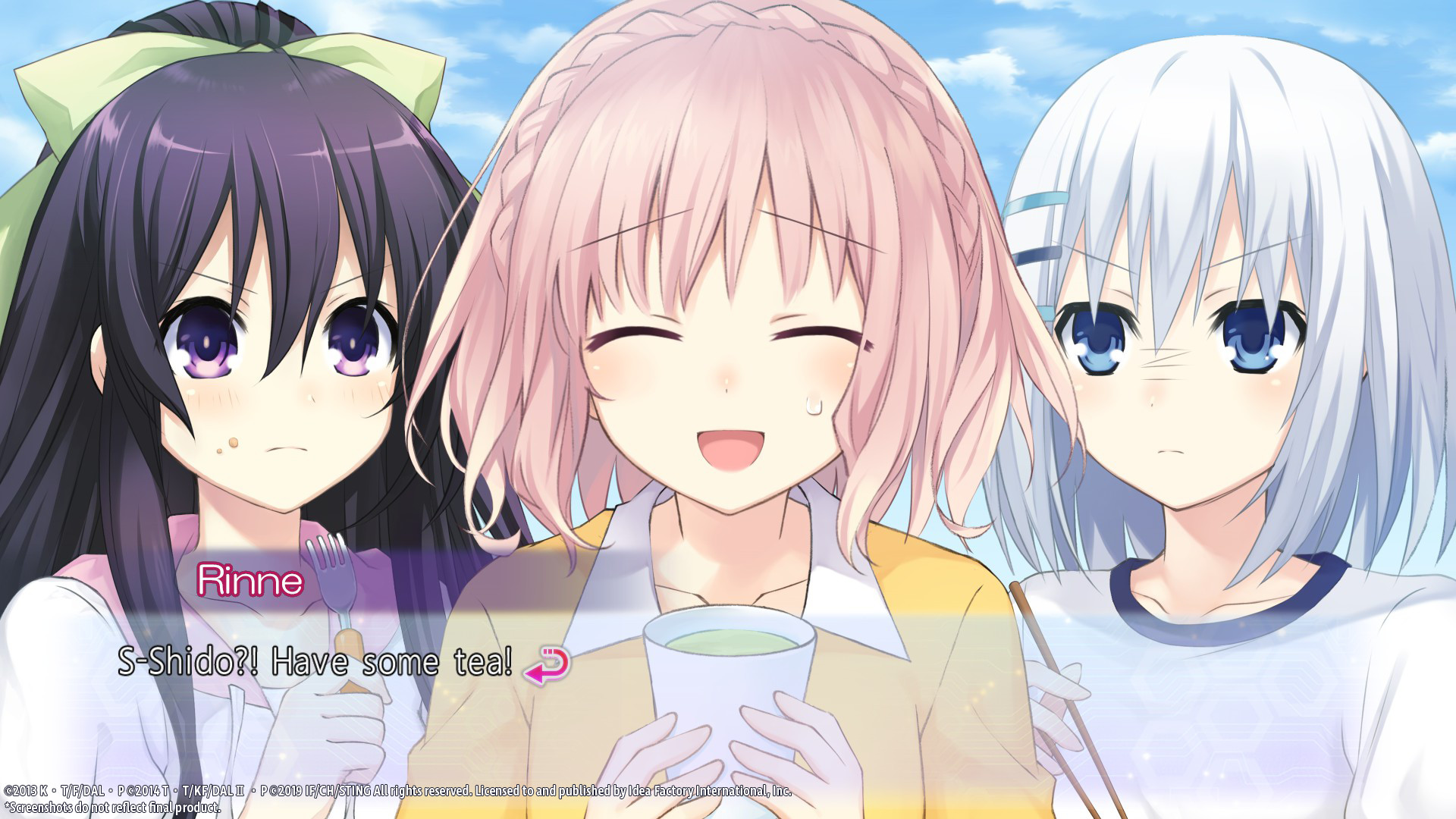
The basic story (of any of the games) is that there is something wrong with the world. As you progress through the game, random side stories will be available for your enjoyment but eventually it comes to a head and you learn what is wrong with the world. A sacrifice of sorts or some other event has to occur in order for the player character and his friends to return to the real world. I have to say that the story, the very story I will not spoil for you, is actually fairly well written and quite enjoyable. Sure, the characters constant fawning over the player character gets a bit tiresome but that could also be a twang of irrational jealousy on my part. There will be characters you will enjoy more than others as there seems to be a character included to represent each of the common anime tropes plus a few extra. When you get to the world map areas you can focus on just the characters you like to interact with rather than the ones that you don’t necessarily care for. For example, Tohka is obsessed with food. While I liked her personality, her gluttony was enough for me to avoid her when I could. The main reason is that I feel I need to lose just a smidgen of weight, so constantly having the hungry Tohka eating all the time kind of made that difficult for me. Thankfully some of the other characters were able to fill in quite nicely for me. The thing is, the more time you spend with any one of the characters, the more likely you are to have an ending with that particular character so it is best to focus on the ones you like the most rather than giving them all equal attention.
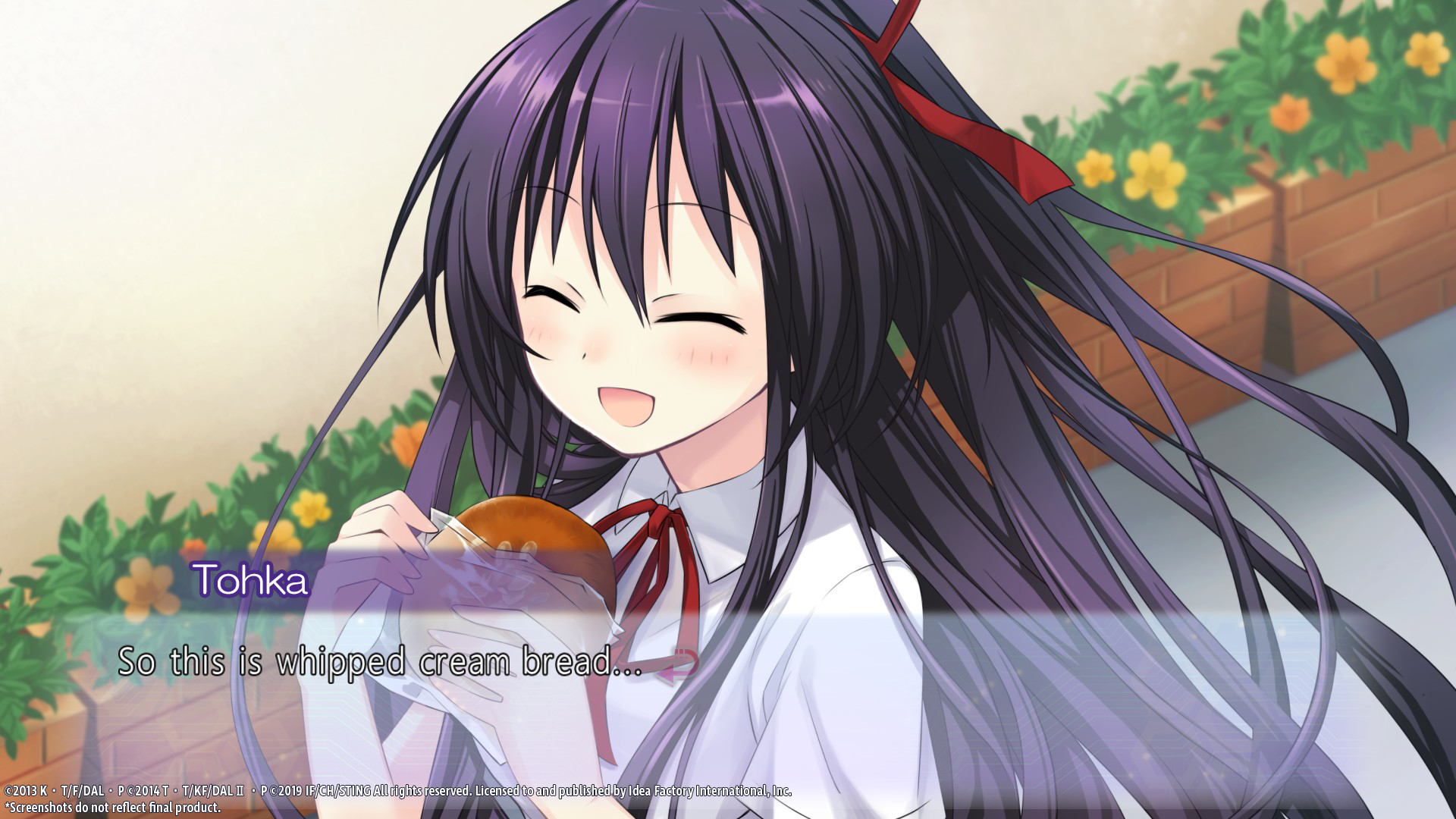
Graphically, this game looks great. The backgrounds are beautifully detailed and there are enough environments around that there is always something interesting to look at. There are number of common environments that get reused a bit much, such as the mall where the same hallway is used for virtually every scene there, but there plenty of backgrounds throughout the three stories to keep it fresh and interesting all the same. The character models are all exceptionally detailed, different and mostly unique in appearance. One of the characters, Kotori, changes her ribbon depending on her mood or dominant personality traits. Her white ribbon has her being sweet and nice and her black ribbon has her as a more of a stern character. All of the characters are fascinating to look at and have a lot of animation. They tend to move around the screen a bit, get closer move further away all while having somewhat life-like animations including animated mouths. This kind of attention to detail really separates the cheap Visual Novels from the more premium ones. There is also a split personality character who manifests part of herself as a rabbit puppet that doesn’t like being called a rabbit. The voices of the Spirit and the totally not-a-rabbit, rabbit puppet are completely different with the Spirit being quiet and shy and the puppet being boisterous.
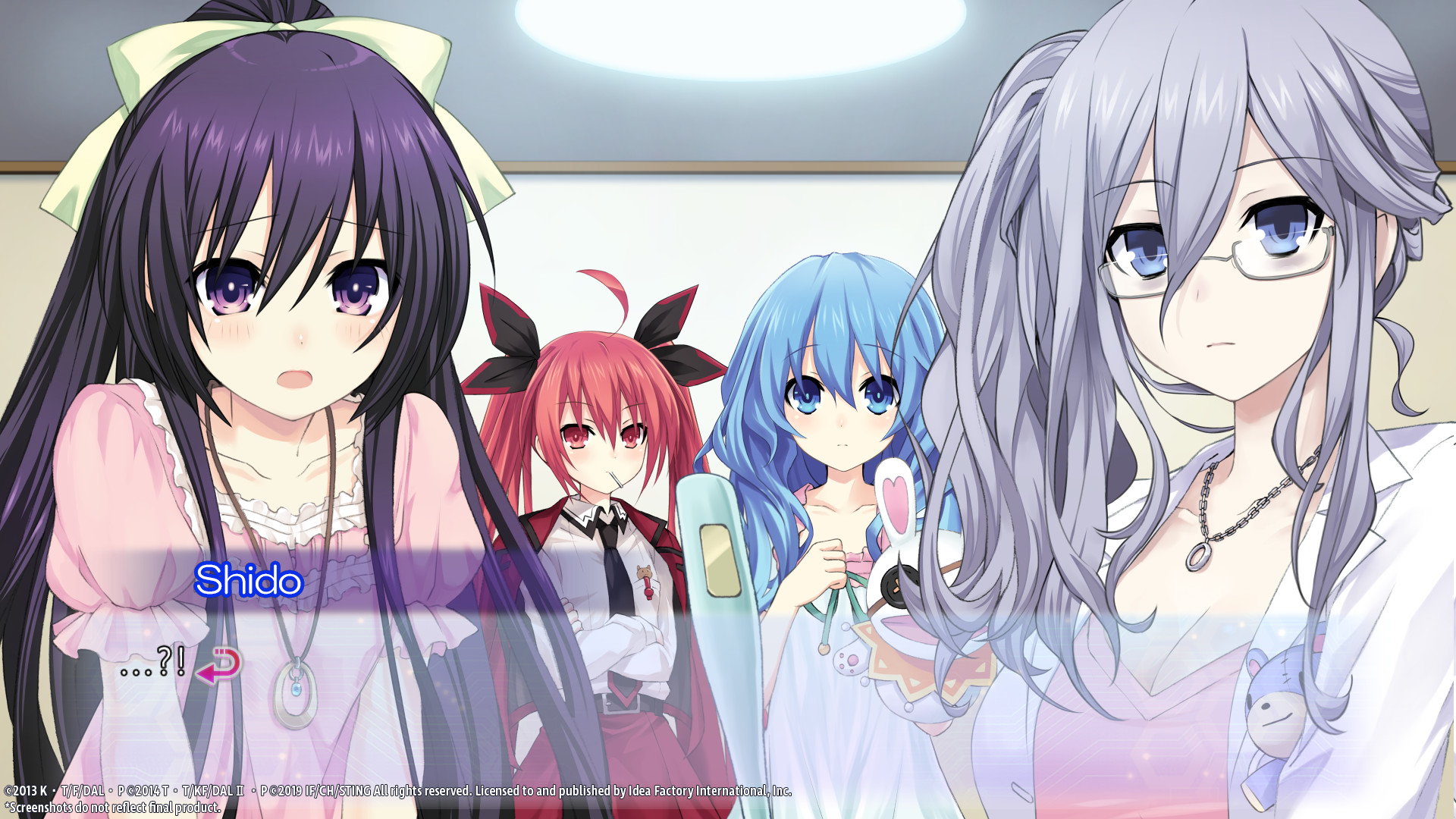
Speaking of speaking, the game is pretty much fully voiced other than the player character but unfortunately there is no English track here. I know, purists say the true Japanese track is always better, however for games where there is plenty to see on screen already such as the aforementioned mouth movements of the speaking character, I usually prefer to understand the spoken words rather than having to just read them. That doesn’t really detract much though because all of the characters have pleasant voices even if I can’t really make out everything they are saying. The background music is also quite well done with the music shifting depending on the mood. It really helps keep you engrossed in the story when the music shifts as the story’s tone changes.
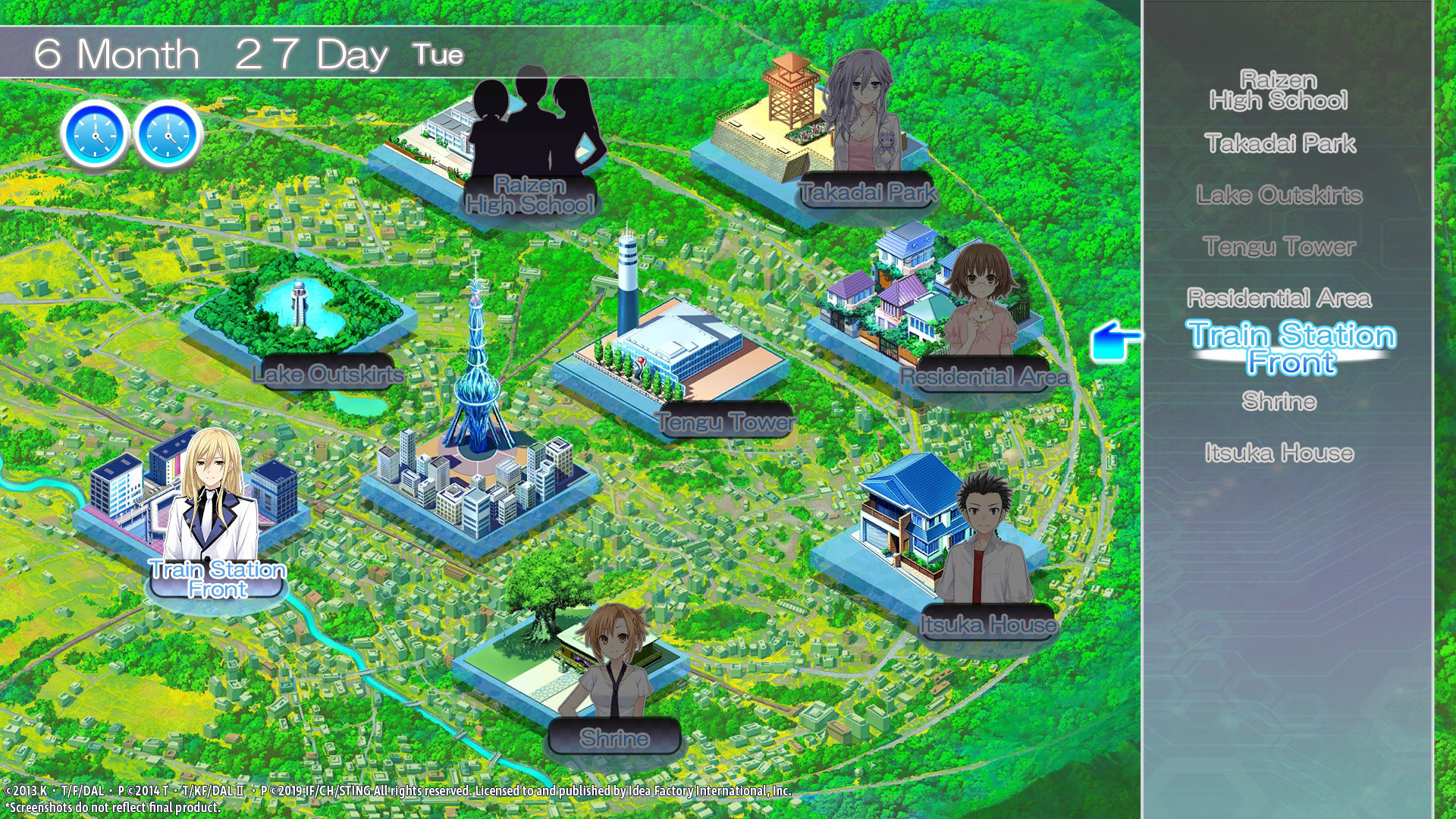
The keyboard controls were a little confusing and I often found myself hitting the wrong button until I wrote them down. The gamepad controls were quite a bit easier to figure out. While the basic interface for the game is simple due to being a Visual Novel and not a high interaction game, it still offers a fair number of features. The Visual Novel standard dialogue replay log via a text-based list is there that both lets you read previous text as well as have them spoken again for you. This log actually takes it one step further than what is common though and lets you jump back to the scene itself too. This can be useful if the scene was a particularly interesting one you wanted to watch again without having to reload your save game. Being a Visual Novel with no combat or other actiony bits, you are able to save any time you please, even at choice points so technically you can always go back and try again if you don’t like where the story is heading after your choice.
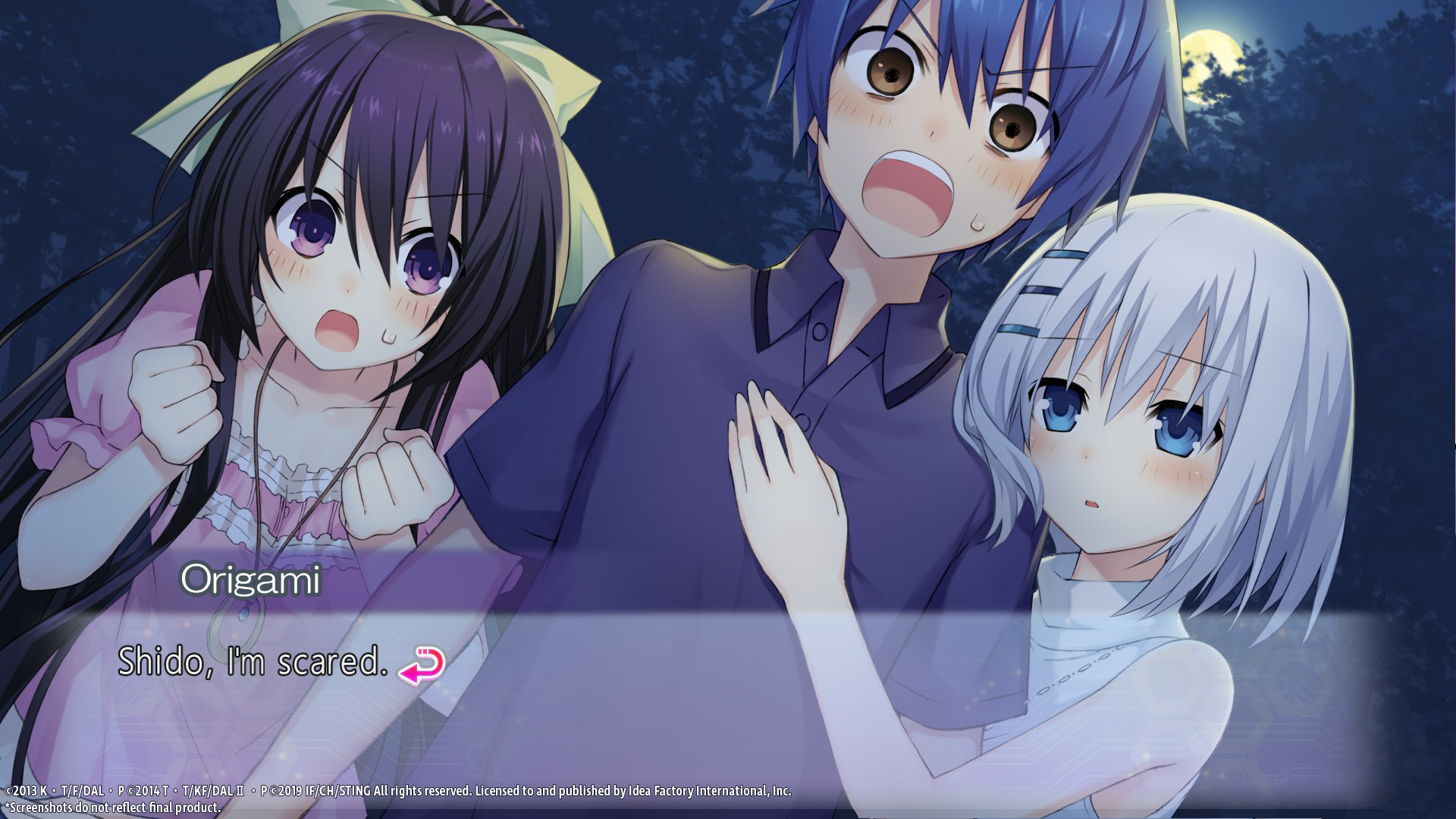
Verdict
So, should you pick up DATE A LIVE: Rio Reincarnation? If you are a Visual Novel fan, then you should definitely give it a try. It is one of the better ones I have played recently. While the first game does have the whole recap of events before it starts that truly makes you feel like you missed something, it still ends up becoming a decent story. The next story builds on the previous story’s momentum and is arguably a little better. The third, which is technically what this review was to be about, is kind of the culmination of the story. It is good enough to stand on its own, but having the first two games there to support it and give it depth really made it more enjoyable. Plus, there is the bonus that since the other two games are included with it, you technically have three times as much story for your money. If you are a fan of DATE A LIVE, then you will want to pick it up. It introduces three new localized stories for you to enjoy as well as gives you a bit of interactive experience in the DATE A LIVE universe. As per usual when I talk about Visual Novels, if you are looking for a typical Idea Factory Visual Novel/JRPG hybrid game or any other more in-depth gameplay then you may wish to check out the latest non-spin-off Neptunia title instead. This game might not keep your interest if you are the kind of person who skips the story scenes to get right back to the gameplay action. All in all, in my book, this is a definite Save.

